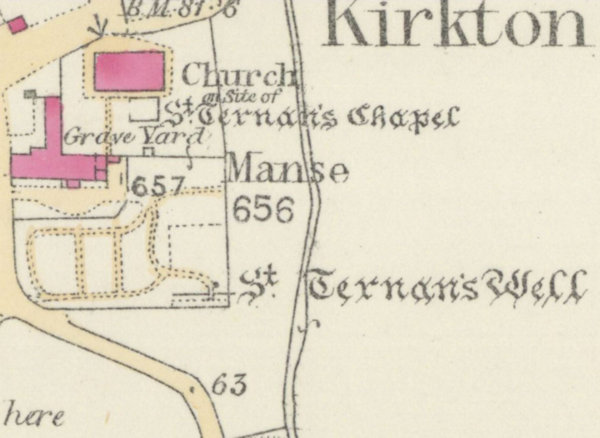 |
Dedication: Saint Ternan Location: Kirktown of Slains Coordinates: 57.35071N, -1.93294W Grid reference: NK041289 Heritage designation: none |
HOME - SCOTLAND - ABERDEENSHIRE
 |
Dedication: Saint Ternan Location: Kirktown of Slains Coordinates: 57.35071N, -1.93294W Grid reference: NK041289 Heritage designation: none |
St Ternan of the Picts, as he is often called, was local to this area of modern-day Aberdeenshire. He is said to have been born in Fordoun, only a mile or so away from Auchenblae, the site of St Palladius' Church and existing holy well. Palladius, a Catholic missionary of the 5th century, who is credited with urging Pope Celestine I to send the famous St Germanus to Britain, is believed to have been an associate of St Ternan. According to Alban Butler, writing in volume 6 of The Lives of the Primitive Fathers, Matryrs, and Other Principal Saints (1799), Ternan was "ordained" by Palladius in 440, after he had already spent some time as a monk. At some point during his life, Ternan reportedly became the first "Bishop of the Southern Picts", and appears to have had a reasonably large area of influence. However, Ternan's cult was mainly centred in this part of Aberdeenshire; this holy well is one of four, all dedicated to him, in the area.
It is quite possible that Ternan himself visited Kirktown of Slains as a missionary, probably during the 5th century, and converted the local community to Christianity. The current parish church was reportedly constructed on the site of a much older chapel of St Ternan, which almost certainly would have been associated in some way with the nearby holy well.
As with the majority of holy wells in this region, very little information has been preserved regarding its history. I have been unable to glean any information about its associated traditions (which it surely once had). Indeed, even the Canmore database has nothing to say of it excepting the fact that it is a "natural spring". Nonetheless, it has always been marked on Ordnance Survey maps, and, until recently, named.
|
Access: The well is located in the churchyard, which is open to the public. |
Images:
Old OS maps are reproduced with the permission of the National Library of Scotland
Copyright 2025 britishholywells.co.uk